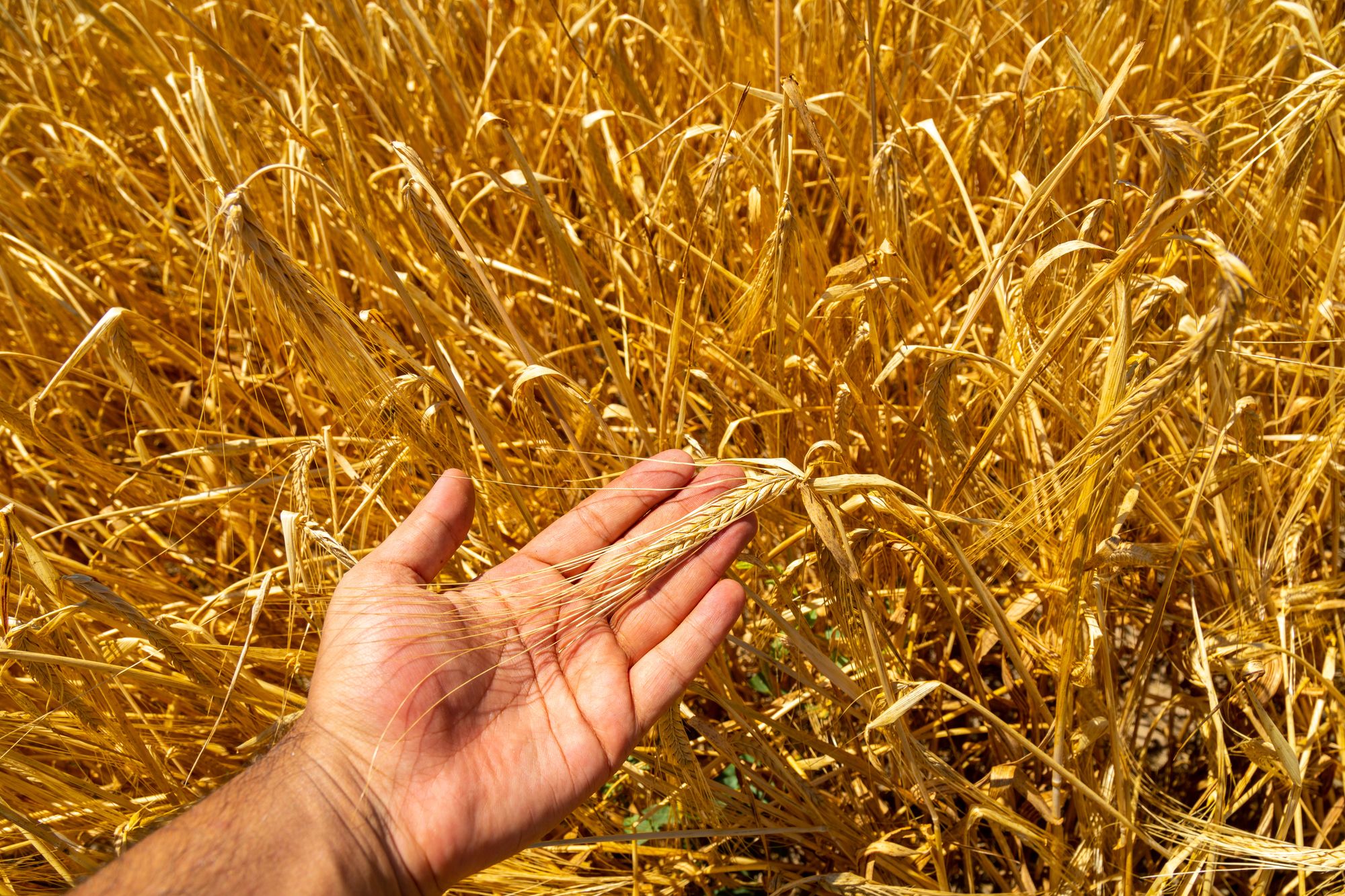Food Security vs. Sustainability: Assessing the Impact of EU's Farm-to-Fork Strategy

The European Union's Farm-to-Fork (F2F) strategy, introduced as part of the European Green Deal, aims to make the food system more sustainable and reduce its environmental impact, while increasing the health and well-being of EU citizens. The F2F strategy includes ambitious targets for reducing pesticide use and improving soil health, among other measures, in order to create a more sustainable food system. However, recent assessments suggest that this strategy could pose risks to food security in the region. The reduction of inputs and pesticides, for example, could lead to lower crop yields and higher production costs, which could result in higher food prices, potentially impacting low-income households (Schaible & Aillery, 2020). In addition, the potential for reduced productivity and production losses in some regions could negatively impact food availability in those areas (Oude Lansink et al., 2020). Furthermore, the reduction in pesticide use could limit farmers' ability to protect crops from pests and diseases, potentially reducing yields (Arfini et al., 2021). These concerns raise important questions about the potential risks and benefits of the F2F strategy, and how to ensure that it achieves its sustainability goals without compromising food security in the EU. The purpose of this article is to provide a summary of three of the most significant impact assessments of the EU's Farm-to-Fork strategy published to date and to discuss the potential risks and benefits of the strategy, with a particular focus on its impact on food security in the EU.
One study, titled "The EU's farm-to-fork strategy: An assessment from the perspective of agricultural economics" (Arfini et al., 2021), published in the journal Applied Economic Perspectives and Policy, provides an extensive assessment of the F2F strategy's potential impacts on the agricultural sector in the EU. The study finds that the F2F strategy's ambitious sustainability goals, such as the 50% reduction in pesticide use, could have unintended negative consequences, including reduced agricultural productivity, higher production costs, and potentially lower food availability. In particular, the study raises concerns about the potential impact of the pesticide reduction targets on agricultural yields. The authors note that "restricting the use of pesticides is likely to reduce yields and increase the costs of production" (Arfini et al., 2021, p. 3).
The study also highlights the potential risks to food security in the EU, particularly for vulnerable populations. The authors note that the F2F strategy's pesticide reduction targets could limit farmers' ability to protect crops from pests and diseases, which could ultimately lead to lower yields and reduced availability of some crops. The study also notes that the F2F strategy's proposed reduction in synthetic fertilizer use could lead to lower crop yields, which could negatively impact food security in the region (Arfini et al., 2021).
In summary, the study by Arfini et al. (2021) suggests that the F2F strategy's ambitious sustainability goals could have unintended negative consequences, including reduced agricultural productivity and potential risks to food security in the EU. The authors recommend that policymakers carefully consider the potential risks and benefits of the F2F measures to ensure that the strategy achieves its sustainability goals without compromising food security in the region.
Another assessment, published by the U.S. Department of Agriculture's Economic Research Service (ERS), explores the potential economic and food security impacts of reducing agricultural inputs under the F2F and biodiversity strategies (Schaible and Aillery, 2020). The study suggests that reducing inputs, such as pesticides and synthetic fertilizers, could lead to lower crop yields, which could negatively impact food security in the EU, particularly for low-income households. The authors note that "reductions in yields could reduce food availability, increase food prices, and potentially exacerbate food insecurity in the EU, particularly among vulnerable populations" (Schaible and Aillery, 2020, p. 1).
Moreover, the ERS study highlights the potential distributional impacts of reducing agricultural inputs under the F2F strategy. The authors note that the costs of reducing inputs would fall disproportionately on smaller farms, particularly those with less access to capital and technology, potentially leading to farm consolidation and further concentration of the agricultural sector. The study states that "smaller and less well-capitalized farms may face particular challenges in adapting to more sustainable production systems, which may exacerbate existing inequalities in the sector" (Schaible and Aillery, 2020, p. 1).
The ERS study by Schaible and Aillery (2020) highlights the potential negative economic and food security impacts of reducing agricultural inputs under the F2F strategy, particularly for low-income households. The authors suggest that reducing inputs could lead to lower crop yields, higher food prices, and potential exacerbation of food insecurity in the EU. Additionally, the authors note that smaller farms, particularly those with less access to capital and technology, could face disproportionate costs of reducing inputs, potentially leading to farm consolidation and further concentration of the agricultural sector.
A third study, conducted by the Wageningen University and Research, assesses the potential impact of the F2F strategy on crop production in the EU (Oude Lansink et al., 2020). The study suggests that the F2F strategy's ambitious sustainability targets could result in lower crop yields, potentially leading to higher food prices and lower availability. The authors note that "lower productivity may increase food prices, thereby reducing the affordability of food for vulnerable groups and increasing food insecurity" (Oude Lansink et al., 2020, p. 4).
The study also highlights the potential risks of production losses in regions heavily reliant on intensive farming practices. The authors note that the F2F strategy's sustainability targets could lead to reduced production in regions where intensive farming practices are common, particularly for crops such as wheat, maize, and potatoes. The authors suggest that "reductions in the production of these crops in these regions could have significant impacts on food availability and prices" (Oude Lansink et al., 2020, p. 5).
The study by Oude Lansink et al. (2020) highlights the potential negative impacts of the F2F strategy on crop production in the EU. The authors suggest that the strategy's ambitious sustainability targets could lead to lower crop yields, higher food prices, and potentially lower availability, particularly for vulnerable populations. Additionally, the authors note the potential risks of production losses in regions heavily reliant on intensive farming practices, which could further exacerbate the potential negative impacts of the F2F strategy.
While the F2F strategy has the laudable goal of making the food system more sustainable, the assessments discussed raise serious concerns about the potential risks to food security in the EU. The reduction of inputs and pesticides, for example, could lead to lower crop yields, increased production costs, and higher food prices, which could have disproportionate impacts on low-income households. Furthermore, the potential for reduced productivity and production losses in some regions could negatively impact food availability in those areas, potentially exacerbating existing inequalities and contributing to food insecurity in vulnerable populations.
In addition to these challenges, the ongoing conflict in Ukraine has further complicated the issue of food security in the EU. The Russian aggression against Ukraine has had a profound impact on the region's food system, with a significant reduction in agricultural output and exports from Ukraine, which was one of the EU's main sources of grains and oilseeds. The resulting food supply chain disruptions and price hikes have had far-reaching impacts on food security and affordability for EU consumers (European Parliament, 2022).
To ensure that the F2F strategy achieves its sustainability goals without compromising food security, it will be crucial to carefully consider the potential risks and benefits of the various measures proposed. Policymakers should work to mitigate the potential negative impacts on agricultural productivity and food security, while also incentivizing sustainable practices that support the long-term health and well-being of EU citizens. This may include targeted investments in research and development to identify and promote sustainable agricultural practices that enhance productivity and reduce environmental impacts, as well as financial and technical support for farmers to help them transition to more sustainable production systems.
In addition, it is essential to recognize the importance of supporting rural communities and small-scale farmers, who may face particular challenges in adapting to more sustainable production systems. The ERS study by Schaible and Aillery (2020) notes that smaller and less well-capitalized farms may face significant challenges in adapting to more sustainable production systems, potentially exacerbating existing inequalities in the sector. To promote the long-term sustainability of the food system, policymakers must prioritize support for these farmers and rural communities, including investments in infrastructure and services to support their transition to more sustainable practices.
Policymakers must also consider the potential social and economic impacts of the F2F strategy, particularly on low-income households and vulnerable populations. The Arfini et al. (2021) study highlights the potential for higher food prices and reduced food availability as a result of reduced agricultural productivity, while the Oude Lansink et al. (2020) study notes the potential for concentration in the agricultural sector as smaller farms struggle to adapt to more sustainable practices. It will be crucial to ensure that the transition to more sustainable production systems is socially and economically sustainable, and that vulnerable populations are not left behind.
In conclusion, the EU's Farm-to-Fork strategy presents an opportunity to make significant progress towards a more sustainable food system, but policymakers must carefully consider the potential risks and benefits of the various measures proposed to ensure that the strategy does not compromise food security in the EU. The ongoing conflict in Ukraine has further complicated the issue of food security, making it even more critical to prioritize the social and economic sustainability of the food system. It will require a concerted effort to identify and promote sustainable practices that enhance productivity, reduce environmental impacts, and support the long-term health and well-being of EU citizens, while also supporting rural communities and small-scale farmers in their transition to more sustainable production systems.
References
Arfini, F., Donati, M., Menozzi, D., Mora, C., & Soregaroli, C. (2021). The EU's farm-to-fork strategy: An assessment from the perspective of agricultural economics. Applied Economic Perspectives and Policy, 43(2), 397-412. doi: 10.1002/aepp.13239
EU Parliament. (2022). Russia's war on Ukraine: Impact on food security and EU response. Retrieved from https://www.europarl.europa.eu/RegData/etudes/ATAG/2022/729367/EPRS_ATA(2022)729367_EN.pdf
Oude Lansink, A., Meuwissen, M. P., Van der Lans, I. A., & Van Asseldonk, M. A. (2020). Impact Assessment of EC 2030 Green Deal Targets for Sustainable Crop Production (Report No. 1233). Wageningen Economic Research. Retrieved from https://edepot.wur.nl/558517
Schaible, G. D., & Aillery, M. P. (2020). Economic and Food Security Impacts of Agricultural Input Reduction Under the European Union Green Deal's Farm to Fork and Biodiversity Strategies (Economic Brief No. 30). United States Department of Agriculture, Economic Research Service. Retrieved from https://www.ers.usda.gov/webdocs/publications/99741/eb-30.pdf?v=7444.1

